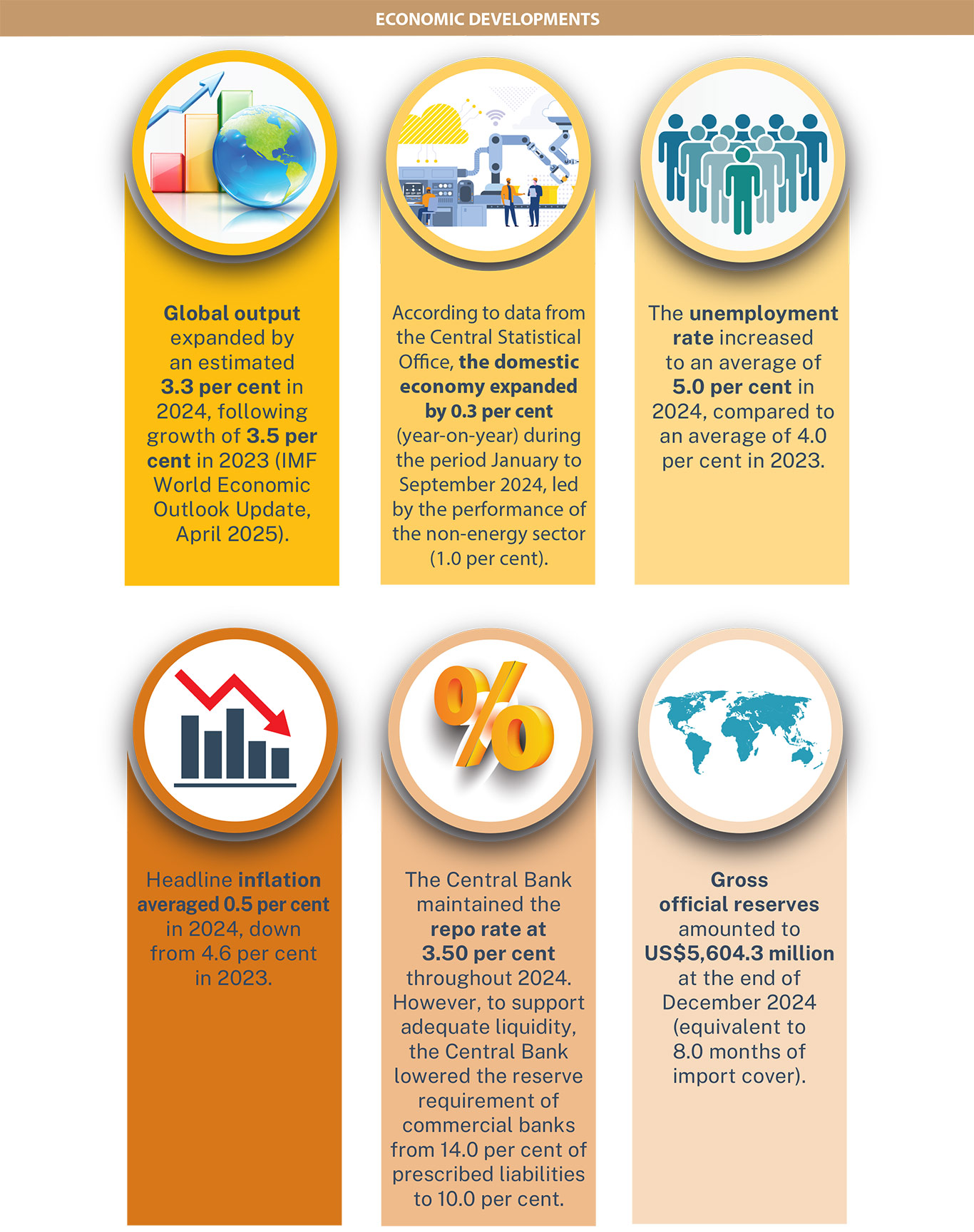Explore the global economic landscape of 2024, highlighting mixed growth influenced by geopolitical conflicts, inflation, and adverse conditions. The analysis covers regional consumption and export trends, overall GDP performance, labor market dynamics, inflationary pressures, and fiscal outcomes. It also examines central bank policies and liquidity adjustments, while assessing the potential for sectoral growth and the risks to fiscal stability amid ongoing global trade tensions.
Slide right to see more
Annual Economic Survey Highlights
Global Growth Remained Resilient
Global growth was mixed in 2024 amid geopolitical conflicts, persistent inflationary pressures, and adverse weather events.
Inflation Trends
Inflationary pressures continued to retreat in 2024, influenced primarily by lower international food prices and increased availability of local agricultural produce.
Positive Growth Driven by Consumption and Exports
The Latin American and the Caribbean (LAC) region, however, remained moderately positive, supported by improvements in private consumption, easing monetary policies and stronger export growth in some of the region’s economies.
Fiscal Challenges
Softer energy prices coupled with declining domestic energy production led to a less favourable fiscal outturn for the fiscal year ending September 2024.
Domestic Economic Performance
Domestically, positive economic growth was sustained during the first nine months of 2024, but the expansion was relatively modest. Data from the Central Statistical Office (CSO), suggest that real GDP improved over the first three quarters of 2024 compared to the previous year.
Monetary Policy Update
The Central Bank’s monetary policy stance remained broadly unchanged during 2024, however, tighter financial system liquidity precipitated a reduction in the reserve requirement on July 19, 2024.
Labor Market Trends
Labour market conditions softened in 2024 as indicated by an uptick in the unemployment rate.
External Account Dynamics
The external current account recorded a smaller surplus in the first nine months of 2024, reflective of a falloff in export earnings and a pickup in imports.
Economic Outlook
Global economic growth is expected to be significantly impacted by escalating trade tensions and policy uncertainty over the short-to-medium term. Against this backdrop, Trinidad and Tobago’s economy is still expected to grow. The non-energy sector is anticipated to remain buoyant, while the energy sector is expected to register a lacklustre performance. Lower gas supplies could, if the decline is left unchecked, have spillover effects on the fiscal position and impact reserve accumulation. Domestic demand-side pressures on headline inflation are likely to remain low, but the downside risk of widening global trade tensions, can result in higher imported inflation.
2024 Outlook: Modest Growth Amid Challenges
Global economic growth is anticipated to remain steady in 2024. Several forces shaping the outlook include subdued activity in advanced economies, mounting geopolitical conflicts, and tight financial conditions. Economic prospects for Trinidad and Tobago are modestly favorable over the short to medium term, as subdued energy sector activity is anticipated to partially offset strong growth in the non-energy sector. While inflation is anticipated to remain low in 2024, the actual pace of price movements will depend largely on changes in utility or tax rates, adverse weather conditions, and the stability of global commodity prices. Heightened geopolitical tensions could also reignite spikes in commodity prices and freight costs, disrupting the global disinflation path.

